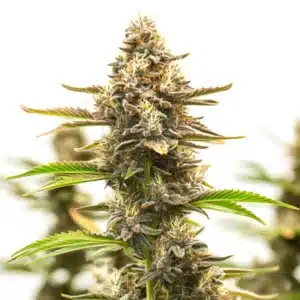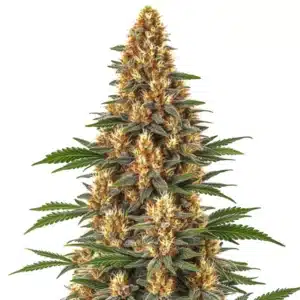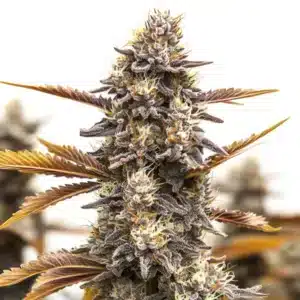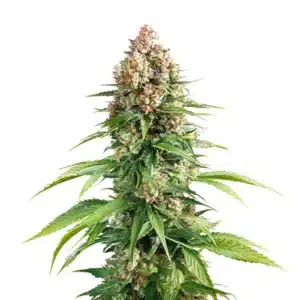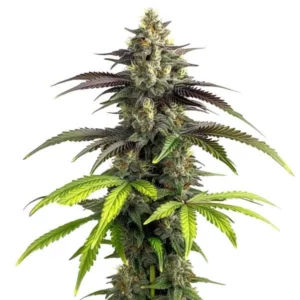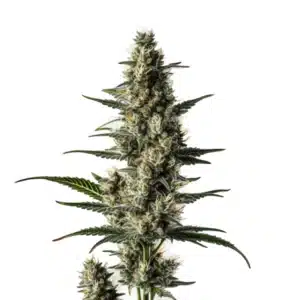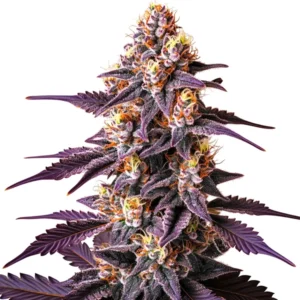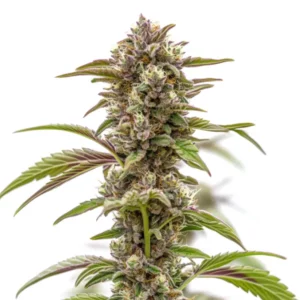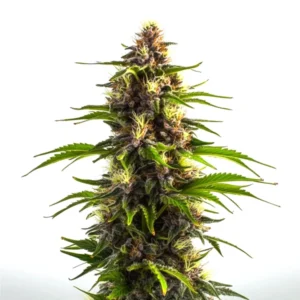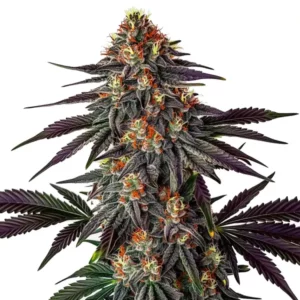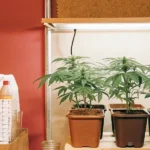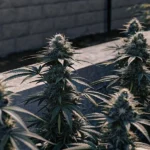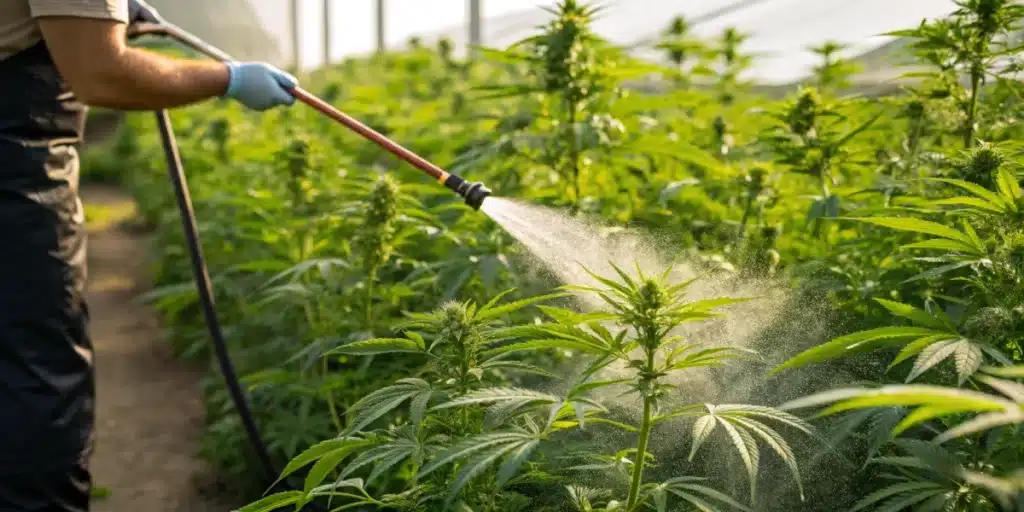
When to Fertilize Cannabis: Mastering the Timing for Peak Growth
Nutrients in Plant Development
Cannabis plants, like all living organisms, require a variety of nutrients to thrive and reach their full potential. These nutrients, which include nitrogen, phosphorus, potassium, calcium, magnesium, and trace elements, play distinct roles in plant development. Knowing When to Fertilize Cannabis is crucial, as nitrogen is key during the vegetative stage, aiding in lush leaf growth, while phosphorus is essential during flowering for the development of robust buds.
Knowing when to fertilize cannabis involves knowing which nutrients are most critical at each growth stage. This knowledge empowers growers to tailor their fertilization strategy, ensuring plants receive the right balance of nutrients when they need it most.
Recommended Strains
Neville Haze Auto
|
|
THC | 18% - 22% (Medium) |
|
|
Type | Autoflowering |
|
|
Yield | High |
|
|
Phenotype | 40% Indica / 60% Sativa |
Neville's Haze
|
|
THC | 21% (Medium) |
|
|
Type | Feminized |
|
|
Yield | High |
|
|
Phenotype | 25% Indica / 75% Sativa |
In addition to macronutrients, cannabis plants also require micronutrients, albeit in smaller quantities. Micronutrients such as iron, manganese, and zinc contribute to vital processes like photosynthesis and enzyme function. Ensuring a comprehensive nutrient profile not only supports healthy growth but also enhances the plant’s ability to resist pests and diseases.
How Timing Affects Nutrient Uptake
The timing of nutrient application can significantly influence how effectively cannabis plants absorb these essential elements. Nutrient uptake is closely linked to environmental conditions, such as temperature, humidity, and light exposure. For example, during periods of rapid growth, such as the early vegetative stage, plants are more receptive to nutrients. Conversely, during stress periods, their ability to absorb nutrients diminishes.
Moreover, the timing of fertilization must align with the plant’s specific growth stages. For instance, delivering a nutrient boost just before the flowering stage can set the stage for an abundant yield. Understanding how timing affects nutrient uptake enables growers to optimize their fertilization strategies, maximizing both growth and yield.
Promos & Deals
Identifying Cannabis Growth Stages
Nutrient Requirements During Vegetative Growth
The vegetative stage is a critical time for cannabis plants, as they focus on establishing a strong foundation for future growth. During this phase, plants require a higher concentration of nitrogen to fuel robust leaf and stem development. Fertilizing cannabis at this stage should prioritize nitrogen-rich fertilizers, which can help produce vigorous plants capable of supporting heavy buds later on.
It’s also essential to monitor the health of the plants during this period. Signs of nutrient deficiency, such as yellowing leaves or stunted growth, may indicate a need for immediate fertilization. Adjusting the nutrient mix based on these observations can lead to more resilient plants that are better equipped to transition into the flowering stage.
Timing is also crucial during vegetative growth; a well-timed application of nutrients can significantly enhance plant vigor. For instance, applying fertilizers in the early morning or late afternoon allows for optimal nutrient absorption while minimizing the risk of evaporation or nutrient burn.
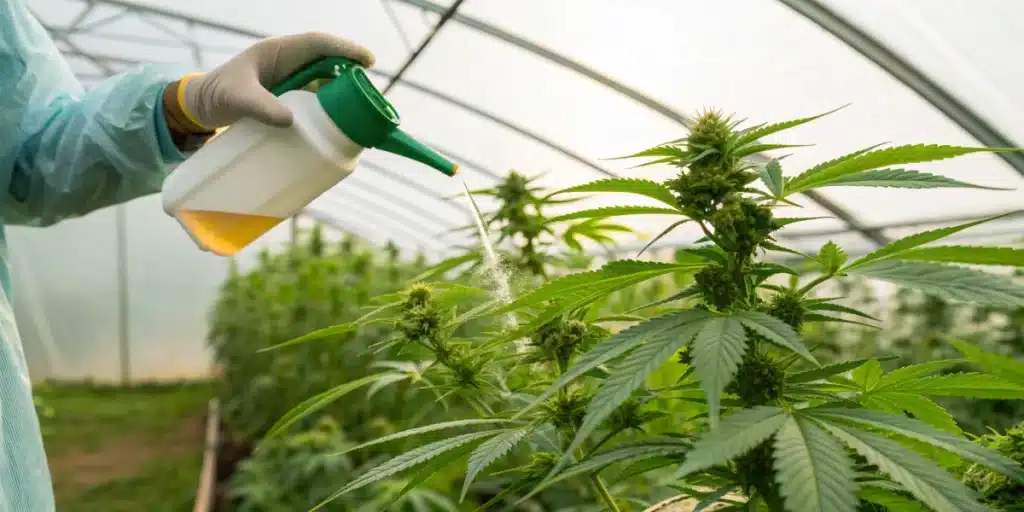
Fertilization Adjustments for the Flowering Stage
As cannabis plants transition into the flowering stage, their nutrient requirements shift dramatically. During this time, a reduction in nitrogen and an increase in phosphorus and potassium is necessary to promote flowering and bud development. Understanding when to fertilize cannabis during this stage is vital, as an imbalance can lead to poor yields or even plant stress.
Growers should adjust their fertilization strategy to focus on bloom-boosting nutrients. Many growers opt for specialized flowering fertilizers that provide the necessary elements to support this critical phase. Additionally, monitoring the plants for signs of nutrient deficiencies or excess is essential. Yellowing leaves, burnt tips, or slow growth can indicate that fertilization needs to be adjusted.
The timing of nutrient applications during flowering can also impact the quality of the final product. Fertilizing too late in the flowering stage may lead to nutrient buildup, which can affect flavor and aroma. Therefore, timing fertilizations correctly is crucial to ensuring a high-quality harvest.
Best Practices for Fertilization Timing
Recognizing Plant Signals for Feeding
One of the most effective ways to determine when to fertilize cannabis is by closely observing the plants. Healthy cannabis plants will exhibit vibrant green leaves and robust growth. However, if you notice any signs of distress, such as yellowing leaves, curling, or slowed growth, these may be signals that your plants are in need of nutrients.
Understanding how your plants react to different nutrient levels is key. For instance, a sudden change in growth rate or leaf color can indicate that it’s time to adjust your fertilization schedule. Keeping a close eye on your plants allows you to respond proactively to their needs, ensuring they receive the nutrients necessary for peak growth.
In addition to visual cues, environmental factors play a significant role in determining when to fertilize cannabis. Changes in light intensity, temperature, and humidity can all affect how plants absorb nutrients. Adapting your fertilization strategy to these environmental conditions can lead to healthier plants and a more bountiful harvest.
Creating a Consistent Nutrient Schedule
A well-planned fertilization schedule is essential for maximizing cannabis growth. Consistency is key, as plants benefit from regular nutrient applications tailored to their growth stages. By developing a nutrient schedule, growers can ensure that their plants receive the right amount of nutrients at the right time, optimizing growth and yield.
Creating a nutrient schedule involves not just timing but also understanding the specific needs of your cannabis strain. Different strains may have varying nutrient requirements, so it’s essential to tailor your approach based on the genetics of the plants. Researching the specific needs of your strain can provide valuable insight into when to fertilize cannabis effectively.
Incorporating a mix of slow-release and quick-release fertilizers can also enhance your fertilization strategy. Slow-release fertilizers provide a steady supply of nutrients over time, while quick-release options can be utilized for immediate nutrient boosts when necessary. This combination allows for flexibility in your nutrient schedule, ensuring that your plants are adequately nourished throughout their lifecycle.
Integrating Fertilization into Your Cultivation Routine
Tools and Techniques for Tracking Growth
To master the timing of cannabis fertilization, utilizing tools and techniques to track plant growth can be invaluable. Keeping a journal or log of your plants’ development allows you to identify patterns and make informed decisions regarding nutrient applications. Documenting growth rates, leaf color, and overall health can help you pinpoint exactly when your plants require additional nutrients.
Additionally, employing technology such as pH and EC meters can assist in monitoring nutrient levels in the growing medium. These tools provide valuable data on nutrient availability, allowing you to adjust your fertilization strategy accordingly. Regular testing helps ensure that your plants are receiving the right balance of nutrients at all times.
Visual aids, such as growth charts or nutrient requirement guides, can also enhance your understanding of when to fertilize cannabis. These resources can serve as quick reference points, helping you stay informed about the specific needs of your plants throughout their lifecycle.
Adapting to Environmental Changes
Cannabis plants are sensitive to their environment, and changes in temperature, light, or humidity can impact their nutrient uptake. Being aware of these environmental factors and how they influence plant health is essential for determining when to fertilize cannabis. For instance, during periods of high heat, plants may require more frequent watering and nutrient applications to compensate for increased evaporation and stress.
Conversely, during cooler months, plants may slow down their growth and nutrient uptake, necessitating a reduction in fertilization frequency. It’s crucial to be adaptable and responsive to these environmental changes to ensure optimal growth conditions for your cannabis plants.
Additionally, external factors such as pests or diseases can also affect nutrient uptake. For instance, pest infestations may hinder a plant’s ability to absorb nutrients, leading to deficiencies. Being proactive in monitoring and managing these conditions can help maintain healthy plants and ensure that fertilization remains effective.
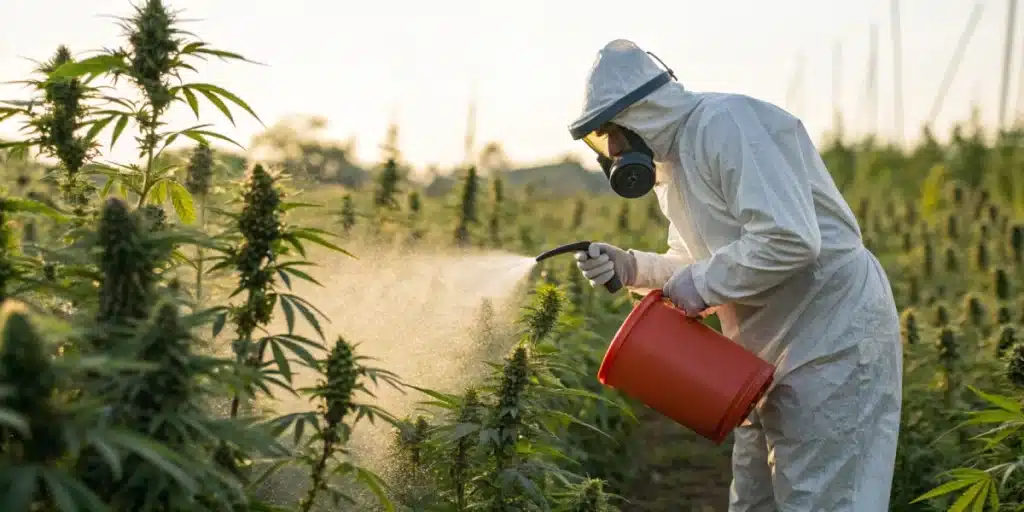
FAQs about When to Fertilize Cannabis
What is the ideal time to fertilize cannabis?
The ideal time to fertilize cannabis often coincides with key growth stages. During the vegetative stage, regular applications of nitrogen-rich fertilizers are essential, while the flowering stage requires a shift to phosphorus and potassium-heavy formulas. Timing your fertilization based on these growth stages can lead to optimal plant health and yield.
How can I tell if my cannabis needs fertilization?
Signs that your cannabis may need fertilization include yellowing leaves, slow growth, and stunted development. Observing plant health closely and being responsive to these signals can help you determine the right time for nutrient applications.
Can fertilization timing impact overall yield?
Absolutely! The timing of fertilization plays a crucial role in determining overall yield. Properly timed nutrient applications can enhance growth and improve bud development, ultimately leading to larger and more potent yields.


